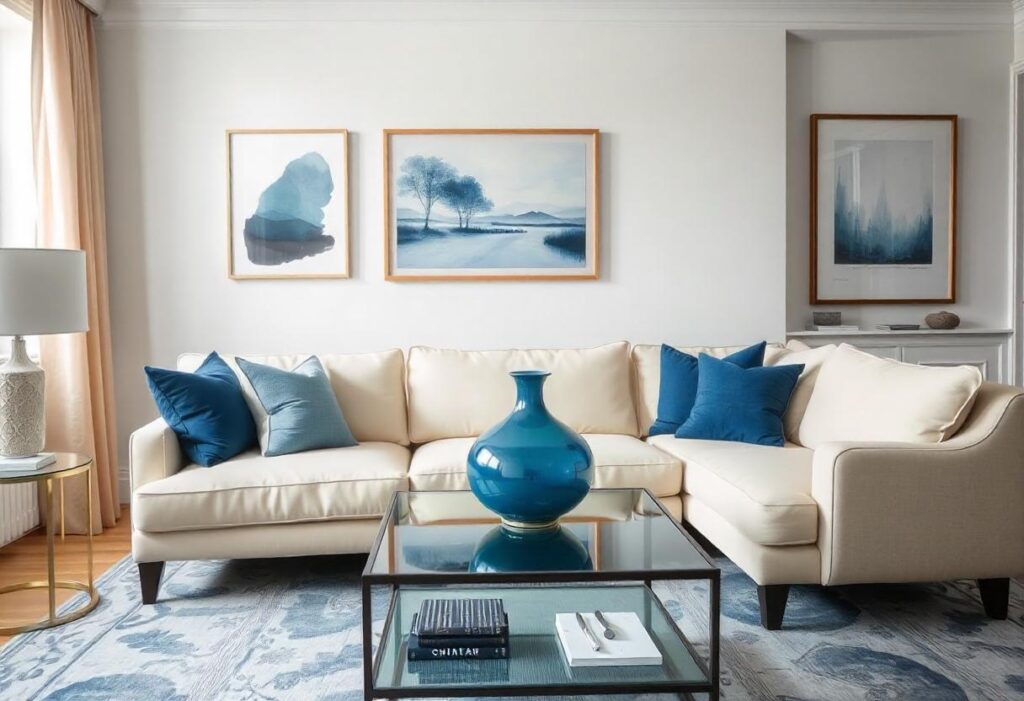Furniture configuration is the process of selecting and arranging furniture pieces in a space to meet specific functional and aesthetic needs. Unlike simply selecting items from a catalog, furniture configuration involves careful planning and creativity to ensure that each piece not only serves its intended purpose but also harmonizes with the space and other furnishings. Furniture configuration can be performed manually by interior designers, or with the help of digital tools that assist in layout design and space optimization.
Furniture Configuration vs. Customization
Furniture configuration differs from customization in that it doesn’t involve altering the core structure or materials of the furniture itself but rather focuses on selecting and arranging predefined elements to fit the user’s requirements. The configuration follows a set logic that considers the room’s dimensions, traffic flow, style preferences, and functional needs, allowing the design to be tailored to both form and function.
How Furniture Configuration is Different from Catalog Shopping
In catalog shopping, the customer simply picks out complete furniture sets or individual pieces, which may not be optimized for their space or specific needs. With furniture configuration, however, the process is more interactive and intentional. Designers or homeowners often ask specific questions about space usage, lifestyle, and design preferences, which guide the selection of items. The final configuration is unique to each situation, resulting from a combination of the user’s responses and spatial constraints.
Types of Furniture Configuration
Depending on the room and purpose, the configuration problem can be either Geometrical (focusing on the layout and positioning of items) or Functional (focusing on selecting the right furniture pieces for specific uses), or a blend of both.
Geometrical Configuration
Geometrical configuration addresses the physical arrangement of furniture pieces within a space. The goal is to create a layout that enhances usability, comfort, and aesthetics while respecting any architectural constraints (e.g., walls, doors, windows). For example, arranging a living room might involve ensuring that sofas face the focal point of the room, such as a TV or fireplace, while leaving enough space for movement. In open-plan areas, it might also require setting up zones for different activities, like dining and lounging, without creating visual or spatial conflict.
Designers and homeowners often use floor planning software to test different configurations, ensuring that the layout is free from crowding or blocking essential pathways. Tools like 3D room planners provide instant visual feedback, making it easier to adjust the furniture arrangement in real time.
Functional Configuration
Functional configuration focuses on selecting the right furniture pieces to meet the user’s needs. For instance, a home office configuration will depend on factors like the type of work being done, the required storage, and ergonomic needs. A compact desk with built-in shelves might be ideal for a small room, while a larger space might allow for more expansive furniture with filing cabinets and ergonomic chairs.
The key to functional furniture configuration is understanding the user’s lifestyle and daily activities. For example, a family with children will need durable, easy-to-clean furniture, while a minimalist apartment may prioritize sleek, multifunctional pieces to save space.
Configurability in Furniture Design
Configurability in furniture design refers to how easily the furniture can adapt to different needs and spaces. This concept ties into modularity—furniture that consists of interchangeable parts or sections that can be re-arranged or replaced. Modular furniture systems, such as sectional sofas or customizable shelving units, offer maximum flexibility, allowing users to modify their layout without purchasing entirely new pieces.
Configurability in furniture is often seen in contemporary designs that promote versatility, enabling homeowners to rearrange or add new components as their space or lifestyle changes.
For furniture to be configurable, it must be designed with flexibility in mind. This means the components should be easy to add, remove, or adjust without affecting the integrity of the other pieces. Modular design is essential here. A well-designed modular sofa, for instance, allows different configurations—corner, straight, or U-shaped—depending on the room layout and seating needs.
The more modular a furniture piece is, the more configurable it becomes. However, not all configurable pieces are modular. Some furniture configurations rely on fixed elements, which makes rearranging or replacing components more challenging.
Benefits of Efficient Furniture Configuration
- Space Optimization: By configuring furniture to fit the exact dimensions of a room, space is used more effectively. This reduces clutter, maximizes functionality, and enhances the overall feel of the room.
- Improved Functionality: Furniture configuration ensures that every piece serves a purpose and fits the user’s specific needs. Whether it’s a home office setup, a living room for entertaining, or a cozy reading nook, functional configuration allows for a more purposeful design.
- Aesthetic Appeal: Thoughtful configuration can elevate the visual harmony of a space. Furniture pieces that are well-arranged according to the room’s flow and style create a cohesive and pleasing environment.
One-Touch Furniture Configuration
One-touch furniture configuration refers to the streamlined process of arranging furniture where the design and execution are completed in a single step. This often involves using software tools that allow users or designers to visualize and manipulate furniture placement in real-time. With this approach, the final configuration is immediately available for implementation, reducing delays in decision-making and enhancing the overall user experience.
Furniture Configuration: The Foundation for Custom Living Spaces
Furniture configuration lays the groundwork for creating personalized living spaces. Whether you are arranging a home office, a cozy living room, or a minimalist bedroom, a well-thought-out configuration enables you to make the most of your space. With the rise of modular and configurable furniture, homeowners now have more options than ever to customize their interiors without compromising on style or functionality. The future of interior design lies in smart, flexible configurations that cater to individual needs and enhance the quality of living spaces.



